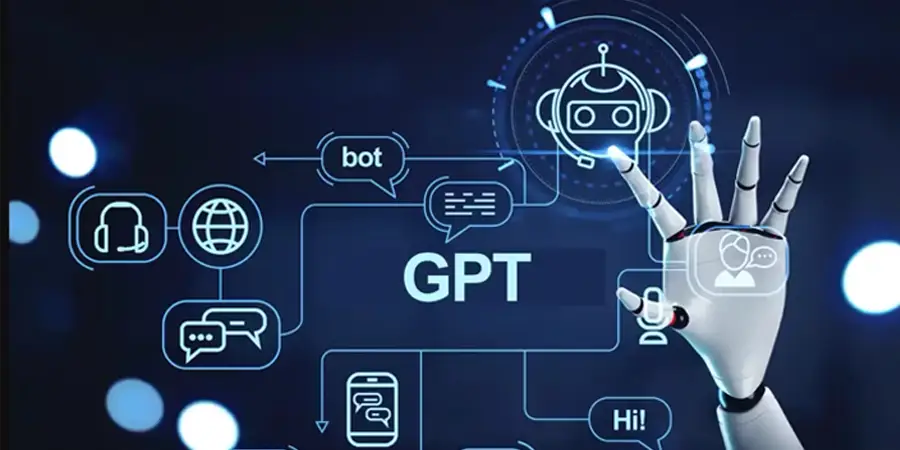GPT-3 and Beyond: Language Models Shaping the Future


Over a decade the Artificial intelligence (AI) tools have becoming extremely powerful and versatile. These tools have started offering a wide array of functionalities such as translating languages, generating text, images, and videos, crafting creative content, and providing informative answers to user queries. These advanced tools present a user-friendly interface that streamline daily tasks leading to enhanced productivity and efficiency. The NorthCap University is one of the leading universities in Haryana offering specialisation in Artificial Intelligence https://www.ncuindia.edu/programme/b-tech-cse-with-specialization-in-artificial-intelligence-and-machine-learning/ . The University offers courses in AI covering the latest topics of Large Language Model (LLM) preparing the future generation to be industry ready. Here is a brief journey of LLMs and their impact in the coming years
Introduction to LLMs
Large Language Models (LLMs) have emerged as revolutionary entities among the various innovations in AI. These models have significantly advanced the field of natural language processing (NLP). They are designed to understand complex linguistic patterns, generate coherent and give contextually appropriate responses. These models are capable of performing a multitude of tasks like machine translation and question answering. They are reshaping the landscape of AI.
LLMs have evolved through several stages. The first version of LLMs was GPT-1 which stands for Generative Pre-trained Transformer developed by OpenAI. It is deep learning based model designed to generate human-like text based on the given input. This model was followed by GPT-2 leading to the ground breaking model GPT-3. With each model the number of parameters has grown exponentially finally culminating in the model GPT-4 with 1.7 trillion parameters. This growth has enabled more sophisticated language understanding and generation capabilities.
The Role of Transformers
The foundation of these models is based on the Transformer architecture. It utilizes a self-attention mechanism to efficiently handle long-range dependencies and parallelize processing. This remarkable innovation was instrumental in development of the GPT series by OpenAI.
Large Language Models (LLMs) such as GPT-3 are revolutionizing various industries by enhancing natural language processing capabilities. Here are some key applications:
Healthcare
- Voice Assistants: LLMs are capable of developing voice assistants that offer personalized health recommendations, respond to queries of patient. They relieve some stress of medical practitioners by providing medication reminders.
- Drug Discovery: LLMs can contribute in improving the effect of AI in drug discovery and personalized therapies . Some of the real world examples of LLMs used for drug discovery are Sherlock and MegaMolBart. Analysing large volumes of scientific data they can predict drug interactions and side effects. They can further assist in designing effective treatments. However on of the risks posed by LLMs is its overconfidence referred to as hallucination, where when faced with a situation where it does not know the answer, the model generates an educated guess which could be a false information.
- Clinical Documentation: For patients the documentation is important to record their medical history, current diagnosis, and ongoing treatment plan. Being a mission-critical system, it can become a cause of heavy burden for clinicians and medical staff. LLMs streamline the medical documentation by converting unstructured data into structure form. It can efficiently convert spoken language into written text accurately. This not only improves efficiency but also accuracy in medical record-keeping.
Despite their shortcomings, LLMs have a disruptive potential that can not only transform medical documentation but also improve the quality-of-care outcomes with greater efficiency.
Education
- Student Assistance: There are some powerful tools to assist students in maths like MathBERT which track student’s understanding and interpret their responses to open-ended questions. AI models like ChatGPT help students with their assignments and also provide personalized learning experiences which is based on their past performance.
- Concerns: Some concerns regarding over-reliance on these tools by students which could potentially hinder the development of critical thinking and problem-solving skills in the future generations.
Finance
- Financial Tasks: LLMs also finds its application in the financial area to streamline the complex processes and increase decision capabilities. To name a few applications
- algorithmic trading
- risk assessment
- market prediction
- financial reporting
Media and Entertainment
- Content Generation: LLMs generate
- promotional videos
- Advertisements
- political speeches
- social media posts
- personalized recommendations for movies, TV shows etc.
Marketing
LLMs enable businesses to deliver personalized messages based on customer data hence improving satisfaction and loyalty.
Coding
GPT-3 supports beginner level programmers by offering guidance, identifying the error in code, and helping with writing code hence making the learning of programming language more efficient and interesting.
Language Translation
The GPT-3 helps overcome language barrier in real time by providing seamless translations in various languages. This bridges communication gaps and facilitates in global collaboration.
Future of GPT
GPT-3 is just the beginning of a new era in language models. Researchers and developers are constantly working on improving and advancing these models to push the boundaries of what is possible. Future language models may possess even more parameters hence enabling them to understand and generate text with even greater accuracy and complexity.
To conclude the Large Language Models are revolutionizing natural language processing, enabling computers to generate human-like text and understand context with unprecedented accuracy. As these models continue to evolve, their arena of applications and impact on real world will expand. This shall drive innovation globally across various fields and address the real-world challenges. The LLMs are here to stay and promises various advancements that will further strengthen the field of artificial intelligence.
Authored By
Prof. Rita Chhikara
Current Designation- Prof. and Hod
Departmental Affiliation – Computer Science and Engineering














